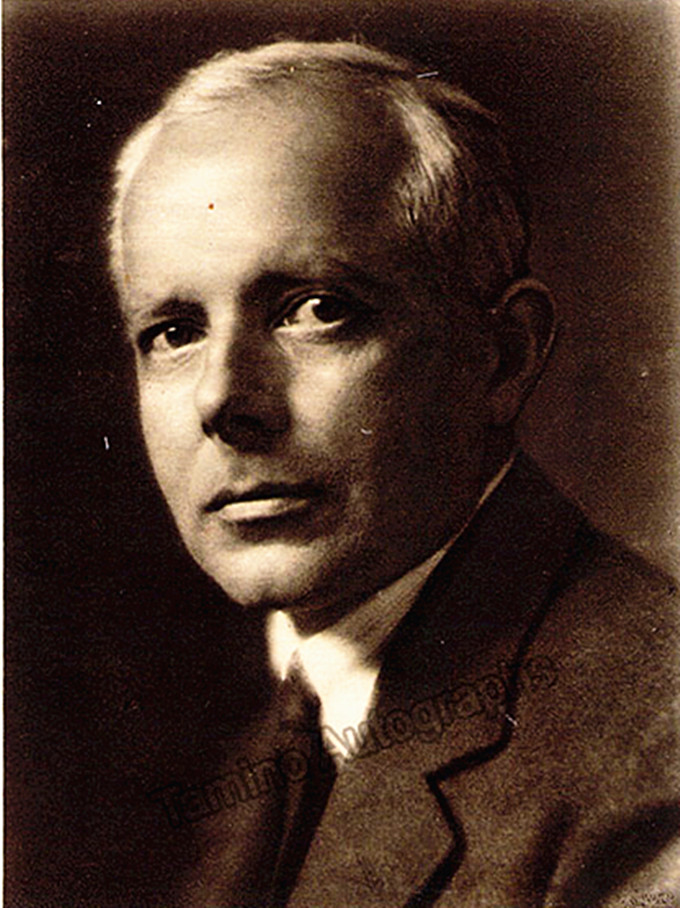|
||||||||||||||||||||||||||
 |
 |
|||||||||||||||||||||||||
|
|

|
|||||||||||||||||||||||||
|
|
|
||||||||||||||||||||||||
| 贝拉·巴托克(Béla Bartók,1881-1945) | |||||||||||||||||||||||||
|
|
|
||||||||||||||||||||||||
| 巴托克的神作... 柏林爱乐乐团(Berliner Philharmoniker)指挥:皮埃尔·布列兹(Pierre Boulez) | |||||||||||||||||||||||||
|
|
|||||||||||||||||||||||||
|
音乐历史上的今天
1943年1月21日,贝拉·巴托克在最后一次音乐会上的《双钢琴协奏曲》的首演时,自顾自表演了一段即兴演奏,令他的妻子手足无措。 贝拉·巴托克(Béla Viktor János Bartók,1881年3月25日-1945年9月26日)作曲家、音乐学家、钢琴家,出生于匈牙利纳吉圣米克洛斯(今罗马尼亚境内),不仅是匈牙利现代音乐的泰斗,也是二十世纪最杰出的音乐家之一。作为作曲家、民间音乐学家,他的很多创举剧烈震动了整个20世纪艺术圈, 一些专家们甚至坚信他的才华可以与贝多芬相提并论。 巴托克5岁开始随母亲学琴,9岁开始作曲,10岁开始公开演出自己的习作和贝多芬的钢琴奏鸣曲,1903年毕业于布达佩斯音乐学院。巴托克1905年开始从事匈牙利民歌(后来范围甚至扩大到东欧各国、北非和土耳其)收集、整理与研究工作,收集了大量的民歌,出版了相关的民歌曲集、研究专著与理论文章,取得了卓越的音乐学研究成就。这项艰巨而宏富的工作,更激发了他源源不断的创作灵感,并促成了他鲜明的创作风格:民族音调与现代节奏、丰富多声的精妙结合。 巴托克本人曾自我总结自己的音乐创作:“创作匈牙利‘新’艺术音乐的基础终于奠定了,第一,掌握过去和当代的西方艺术音乐的普遍知识,作为创作技巧;第二,以新近发掘出来的乡村音乐——一种无可比拟的完美材料,作为作品的灵魂。” 如今,他创作的诸如歌剧《蓝胡子公爵的城堡》、管弦乐《舞蹈组曲》、《为弦乐、打击乐与钢片琴而作的音乐》、《乐队协奏曲》、三部《钢琴协奏曲》等等,特别是他最杰出的六部《弦乐四重奏》,已经成为二十世纪音乐宝库里闪闪发光的明珠。 今日视频:巴托克的管弦乐《为弦乐器、打击乐和钢片琴而作》, 柏林爱乐乐团(Berliner Philharmoniker)指挥:皮埃尔·布列兹(Pierre Boulez) 1937年1月21日—贝拉·巴托克的《为弦乐器、打击乐和钢片琴而作》首演于巴塞尔。这首作品充分证实了巴托克的伟大的艺术才华,在此曲中他实践了作者综合德彪西优美的和 声、贝多芬严密的结构、巴赫杰出的复调,创造出一种富于活力的现代风格的理想。 |
|
||||||||||||||||||||||||
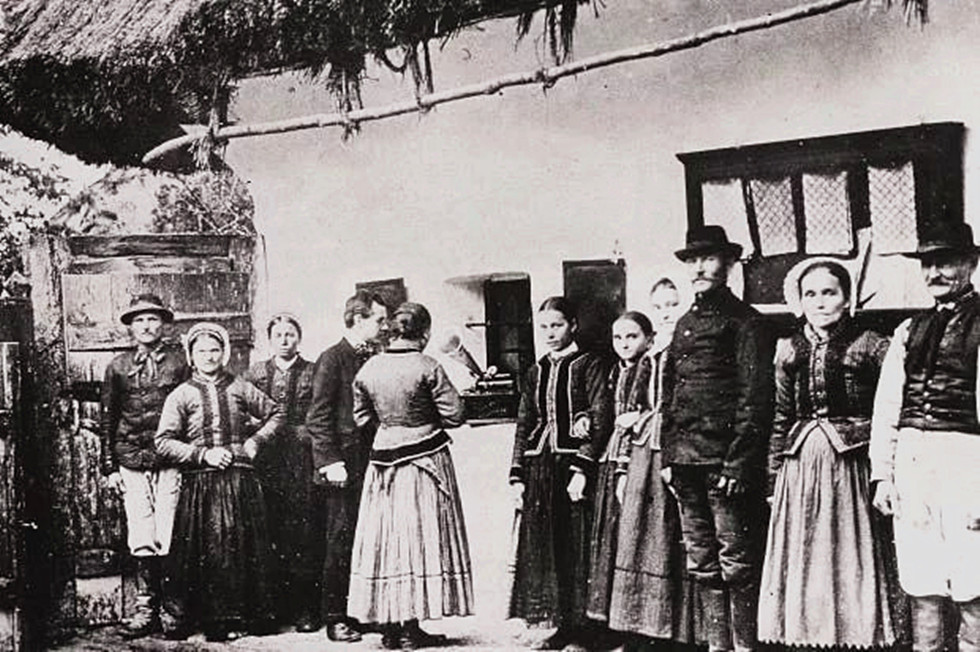 |
|||||||||||||||||||||||||
| 巴托克和农民在一起(Béla Bartók)在特兰西瓦尼亚记录民歌 | |||||||||||||||||||||||||
|
Today in music history
On January 21, 1943, at his last
concert, Bella bartok performed an impromptu rendition of "concerto for
two pianos," to his wife's bewilderment. |
|||||||||||||||||||||||||
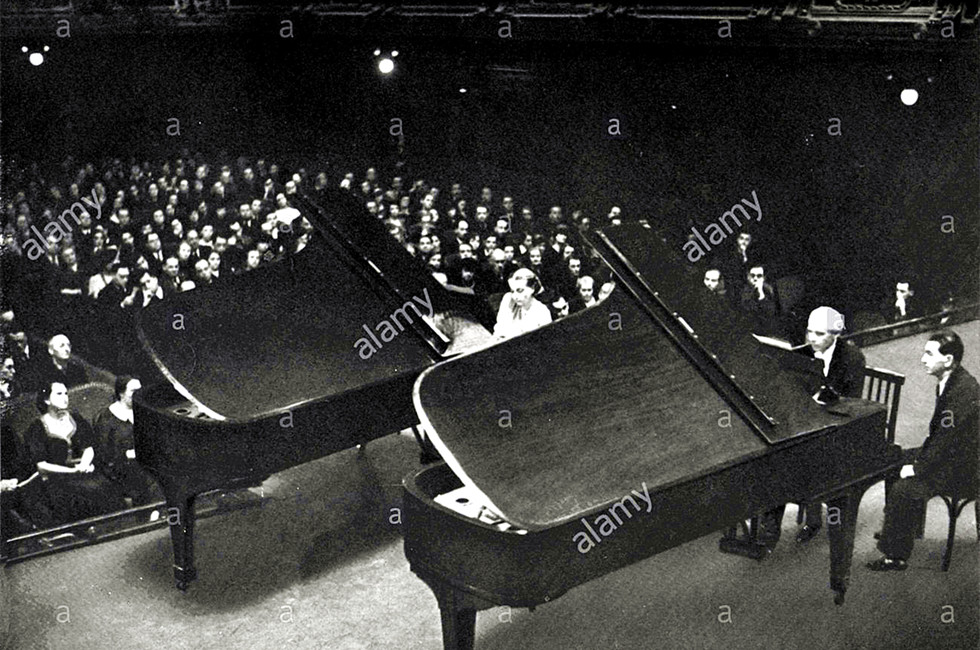 |
|||||||||||||||||||||||||
| 巴托克与妻狄塔·帕莱托里在音乐会上演奏《双钢琴协奏曲》(1943年) | |||||||||||||||||||||||||
【巴托克】为弦乐、打击乐和钢片琴所作的乐曲(Music for Strings, Percussion an Celesta) |
|||||||||||||||||||||||||
作曲家:贝拉·维克托·亚诺什·巴托克(1881年3月25日 - 1945年9月26日)创作时间:1936年乐队:柏林美占区电台交响乐团指挥:费伦茨·弗里乔伊录音时间:1953年 00:00 -I. Andante tranquillo 07:02II. Allegro 14:33III. Adagio 21:08IV. Allegro molto |
|||||||||||||||||||||||||
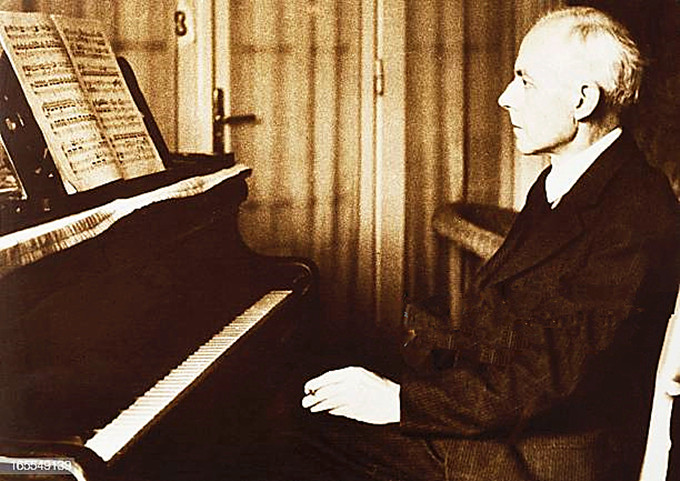 |
|||||||||||||||||||||||||
| 巴托克传记 | |||||||||||||||||||||||||
|
贝拉·维克多·亚诺斯·巴托克,匈牙利作曲家和钢琴家。他被认为是20世纪最重要的作曲家之一;他和李斯特被认为是匈牙利最伟大的作曲家。通过对民间音乐的收集和分析研究,他是比较音乐学的创始人之一,比较音乐学后来发展成民族音乐学。 贝拉·巴托克出生在匈牙利旧王国的纳基森特米克洛斯的一个小镇上(自1920年以来,一直是罗马尼亚的桑尼克洛)。巴托克的家庭反映了这个国家民族文化的多样性。他的父亲,老贝拉,认为自己完全是匈牙利人,因为在他父亲的一方,巴托克家族是一个匈牙利的下层贵族家庭,来自博尔苏,尽管他的母亲,宝拉(出生宝拉沃特),说德语作为母语,但种族上是“混合匈牙利”血统的多瑙河斯瓦比亚血统。在她最亲近的祖先中,有一些姓Polereczky(波兰语或斯洛伐克语)和Fegyveres(匈牙利语)的家族。 贝拉在很小的时候就显示出了非凡的音乐天赋:根据他母亲的说法,在他学会完整的句子说话之前,他就能分辨出她在钢琴上弹奏的不同的舞蹈节奏。四岁的时候,他已经能弹40首曲子了。第二年,母亲开始正式教他弹钢琴。 贝拉是个体弱多病的小女孩,5岁之前一直患有严重的湿疹。1888年,他7岁时,他的父亲(一所农业学校的校长)突然去世。贝拉的母亲就带他和他的妹妹Erzsebet,住在Nagyszőlős(今天Vinogradiv在乌克兰),然后波若尼(今天在斯洛伐克布拉迪斯拉发)。在波兹索尼,贝拉11岁时的第一次公开演出受到了热烈的批评。在他演奏的曲目中,有一首是他自己两年前写的第一首曲子,名为《多瑙河的历程》(the Course of the Danube)。不久之后,拉兹洛·厄尔克尔接受了他做学生。 1899年至1903年,巴托克在布达佩斯皇家音乐学院师从弗朗茨·李斯特的前学生伊斯特万·托曼学习钢琴,并师从亚诺斯·凯斯勒学习作曲。在那里,他遇到了佐尔坦·柯达伊(Zoltan Kodaly)。佐尔坦对他影响很大,并成为他终生的朋友和同事。1903年,巴托克创作了他的第一部大型管弦乐作品《科苏斯》,这是一首纪念1848年匈牙利革命英雄拉霍斯·科苏斯的交响诗。 施特劳斯于1902年在布达佩斯的《查拉图斯特拉也》首映式上认识,施特劳斯的音乐对他早期的作品影响很大。1904年夏天,巴托克到一个度假胜地游玩时,无意中听到一位年轻的保姆利迪·多萨(Lidi Dosa)在特兰西瓦尼亚的基贝德(Kibed)给她照看的孩子们唱民歌。这激发了他对民间音乐的毕生奉献。 从1907年起,他也开始受到法国作曲家克劳德·德彪西的影响,他的作品可多伊是从巴黎带回来的。巴托克的大型管弦乐作品仍然是约翰内斯·勃拉姆斯和理查德·施特劳斯的风格,但他写了一些小型钢琴曲,显示了他对民间音乐日益增长的兴趣。第一首表现出这种新兴趣的乐曲是A小调第一弦乐四重奏(1908年),它包含了类似民谣的元素。 1907年,巴托克开始在皇家学院担任钢琴教授。这个职位使他不再以钢琴家的身份周游欧洲,并使他得以在匈牙利工作。先生,在他的著名的学生Fritz Reiner Georg Solti Gyorgy桑德尔Ernő但Balogh,丽丽克劳斯。在巴托克搬到美国后,他教了杰克·比森和维奥莱特·阿彻。 |
|||||||||||||||||||||||||
| Bartók biography | |||||||||||||||||||||||||
|
Béla Viktor János Bartók,
Hungarian composer and pianist. He is considered one
of the most important composers of the 20th century;
and he and Liszt are regarded as Hungary’s greatest
composers. Through his collection and analytical
study of folk music, he was one of the founders of
comparative musicology, which later evolved into
ethnomusicology. Béla Bartók was born in the small Banatian town of Nagyszentmiklós in the old Kingdom of Hungary, (since 1920, Sânnicolau Mare in Romania). Bartók’s family reflected some of the ethno-cultural diversities of the country. His father, Béla Sr., considered himself thoroughly Hungarian, because on his father’s side the Bartók family was a Hungarian lower noble family, originating from Borsod county, though his mother, Paula (born Paula Voit), spoke German as a mother tongue, but was ethnically of “mixed Hungarian” ancestry of Danube Swabian origin. Among her closest forefathers there were families with such names as Polereczky (Magyarized Polish or Slovak) and Fegyveres (Magyar). Béla displayed notable musical talent very early in life: according to his mother, he could distinguish between different dance rhythms that she played on the piano before he learned to speak in complete sentences. By the age of four he was able to play 40 pieces on the piano and his mother began formally teaching him the next year. Béla was a small and sickly child and suffered from severe eczema until the age of 5. In 1888, when he was seven, his father (the director of an agricultural school) died suddenly. Béla’s mother then took him and his sister, Erzsébet, to live in Nagyszőlős (today Vinogradiv in Ukraine) and then to Pozsony (today Bratislava in Slovakia). In Pozsony, Béla gave his first public recital at age 11 to a warm critical reception. Among the pieces he played was his own first composition, written two years previously: a short piece called “The Course of the Danube.” Shortly thereafter László Erkel accepted him as a pupil.
From 1899 to
1903, Bartók studied piano under István Thomán, a
former student of Franz Liszt, and composition under
János Koessler at the Royal Academy of Music in
Budapest. There he met Zoltán Kodály, who influenced
him greatly and became his lifelong friend and
colleague. In 1903, Bartók wrote his first major
orchestral work, Kossuth, a symphonic poem which
honored Lajos Kossuth, hero of the Hungarian
Revolution of 1848. |
|||||||||||||||||||||||||
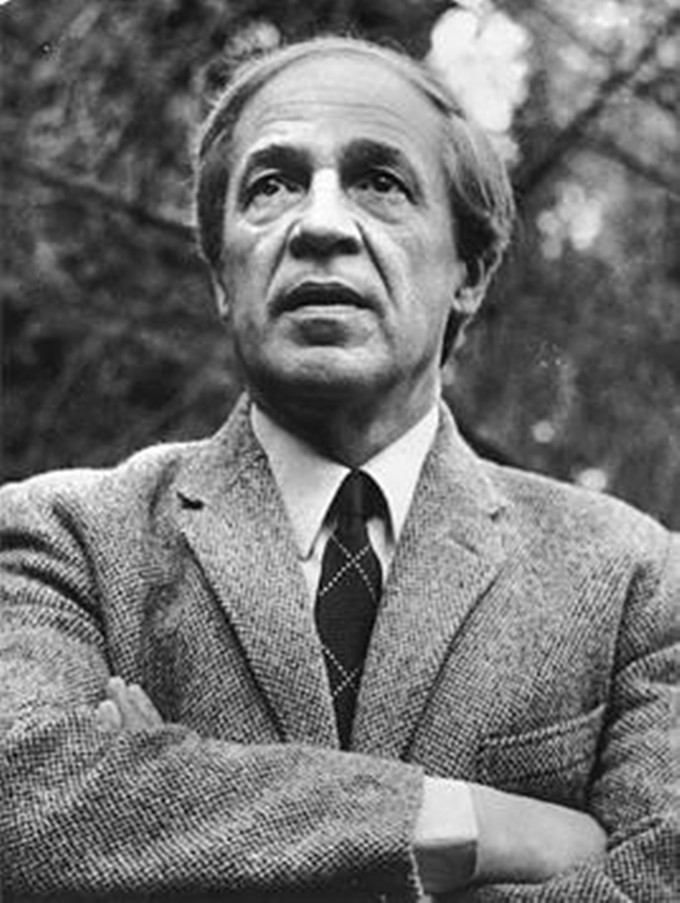 |
|||||||||||||||||||||||||
| 今日视频指挥介绍:皮埃尔·布列兹Pierre boulez | |||||||||||||||||||||||||
| 皮埃尔·布列兹 | |||||||||||||||||||||||||
| 皮埃尔·布列兹首先是优秀的现代作曲家,其次才是指挥家。布列兹在巴黎音乐学院学习期间,拜梅西安为师,随他学和声,随莱博维茨学十二音技法,随奥涅格的妻子沃拉布尔学对位。布列兹在指挥中强调节奏的魅力,强调现代作品在节奏中呈现的色彩感,也强调音响效果。他演绎的他自己的作品、梅西安、巴托克、贝尔格的作品,都堪称为权威。而他最辉煌的成就,应该说是1976年在拜罗伊特指挥《尼伯龙根的指环》百年纪念演出,对这部宏大史诗给予了全新的现代性解释。 | |||||||||||||||||||||||||
| Pierre boulez was a good modern composer first and a conductor second.During his studies at the Paris conservatory, boulez studied harmony under messiaen, the twelve-note technique under leibovitz, and counterpoint with oniger's wife, vorable.In conducting, boulez emphasizes the charm of rhythm, the color of modern works in rhythm, and the acoustics.His interpretation of his own work, the work of messien, bartok, berg, can be called authoritative.His greatest achievement, perhaps, was conducting the centenary performance of the ring of nibelungen at bayreuth in 1976, which gave a new modernity to the epic. | |||||||||||||||||||||||||
| 更多贝拉·巴托克的链接 | |||||||||||||||||||||||||
| 巴托克最后的日子 | |||||||||||||||||||||||||
|
|
|||||||||||||||||||||||||
| 未得原作者编者授权严禁转载www.mt77.com任何内容 | |||||||||||||||||||||||||
|
|
|
||||||
|
copyright © 2003-2005 xilu.com all rights reserved. |
||||||
|
|
||||||

